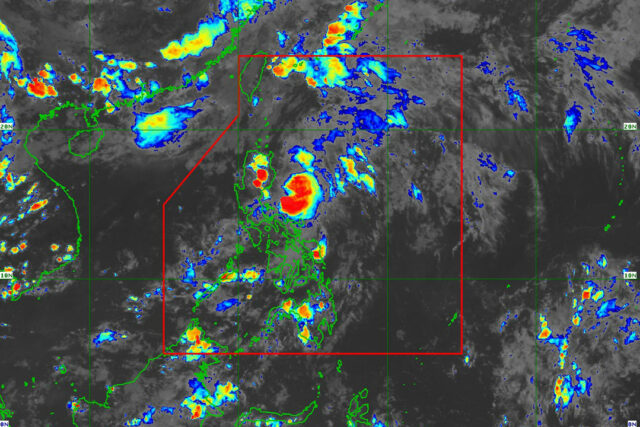By Aubrey Rose A. Inosante
DIGITAL literacy amid the emergence of artificial intelligence (AI) tools that generate deepfake content becomes a basic need for Filipino voters as they are likely to be targeted by misinformation in view of the midterm elections next year, experts said.
This fear was raised as a “deepfake audio” of President Ferdinand R. Marcos Jr. falsely ordering the military to attack China surfaced amid tensions in the West Philippine Sea surfaced recently.
Among the recent victims of “stolen likenesses” are prominent figures composed of journalists, politicians, doctors, and influencers to promote sham products or cryptocurrency scams.
Kontra Daya Lead Convenor Danilo A. Arao, citing a 2022 Social Weather Stations survey that found five of 10 Filipinos have difficulty in spotting fake news, said: “The likelihood of people being hoodwinked into accepting certain videos as being the truth would be there.”
Mr. Arao said disinformation would be at its peak a few days before Election Day and hopes the public can foster a culture of fact-checking particularly on social media.
He also urged the media to strengthen its media literacy and fact-checking mechanism.
Likewise, the National Citizens’ Movement for Free Elections (NAMFREL) National Chairperson Lito “Angel” S. Averia, Jr. said AI tools especially deepfake content can be used to attack individual candidates, political parties, or even the Commission on Elections (Comelec).
“We are proposing the crafting of a code of conduct on AI, using the phrase code of conduct because it addresses the behavior of the parties in the upcoming elections,” he said.
Cybercrime Investigation and Coordinating Center (CICC) Executive Director Alexander K. Ramos said their agency has seen an increase in activities in the use of the deepfake in the country.
“It can mimic anybody. Before our problem was masking, now, the culprits don’t need [it]. Culprits came up with a new technology of masking, that is, by representing themselves through avatars,” Mr. Ramos told BusinessWorld on the sidelines of an economic forum on May 22.
Mr. Ramos said these “avatars” are a copy of their subject matter, which spells out identity theft.
As fears may be used in the 2025 elections, the CICC said it is working closely with Comelec and other stakeholders “to ensure fair and honest election.”
“As far as AI is concerned, [election] operates within that particular framework of elite politics and money politics. Unfortunately, the purveyors of fake news they have more than enough financial resources to maximize such technologies in the coming elections,” said Mr. Arao.
“We would really see the intensification of disinformation. The usual distribution of memes or videos that would try to distort the narrative so that they can impose their own alternative truths to the people,” he added.
Even with a code of conduct on the use of AI, Mr. Averia noted that this is not an end-all-solution to the proliferation of misinformation or disinformation in general but serves as a guardrail on the use of AI when parties for instance come up with their campaign materials or propaganda materials.
Mr. Ramos said the solution does not mainly depend on technology, but sharpening digital literacy and policy development instead.
He also warns that regulating the use of AI might come off as censorship. “We are one of the highly appreciated democracies in the nation because of our liberal policies and we would like to stick to it,” he said.
Mr. Ramos admitted that unregulated AI is hard to control and there should be a flexible law that can accommodate emerging threats of the ever-changing technology.
In 2023, Cavite Representative Lani Mercado-Revilla, Ramon Revilla III, and Agimat Rep. Bryan Revilla filed House Bill No. 9425 or proposed the Penalizing Deepfake Act.
This was said to “establish clearer parameters for determining the appropriate legal consequences for deepfake-related actions.”
According to the Analytics & Artificial Intelligence Association of the Philippines President Michelle Alarcon, the group is working with the Department of Trade and Industry (DTI) on building the Philippine AI Governance Framework, eyed to be launched in the third quarter.
This framework balances the impact on society of AI without stifling innovation, Ms. Alarcon said.
“These are just guidelines but will be what we call a risk-based approach. You can regulate just like the European Union (EU) AI Act,” she said.
The EU Council gave its final green light to its AI Act last week, which aims to reshape how firms and other organizations in Europe use AI for everything from healthcare decisions to policing.
She cited high-risk applications of AI which are deemed “unaccepted” such as detecting emotions based on your facial expressions for credit or loan applications but will be allowed for detecting criminal activity.
Meanwhile, lax guidelines are expected for entertainment use and marketing.
“We just need to practice vigilance and to be critical of the videos or pictures that we see. Just the same initiatives by the government and even the civic societies to be more critical of information that they receive,” Ms. Alarcon said.
Likewise, Digital Pinoys National Campaigner Ronald B. Gustilo warns the public to be discerning and shares tips on how to detect it.
“Usually, AI-generated videos have flaws — missing or excess body parts such as fingers, limbs, and mismatched eyes. The speech and the movement of the mouth are also mismatched,” he said.
Mr. Gustilo said there are AI video detectors available where netizens can check if a video or photo is AI-generated.
This month, OpenAI released a tool designed to detect content created by its popular image generator, DALL-E.
However, it was not designed to detect images produced by other popular generators like Midjourney and Stability.
In a previous interview with the Undersecretary for Infostructure Management, Cybersecurity, and Upskilling Jeffrey Ian C. Dy of the Department of Information and Communications Technology, the agency has reached out to social media platforms such as Meta and YouTube.
He noted that Meta is eyeing to deploy its “Made with AI” labels on AI-generated video, audio, and images on Facebook this month.











